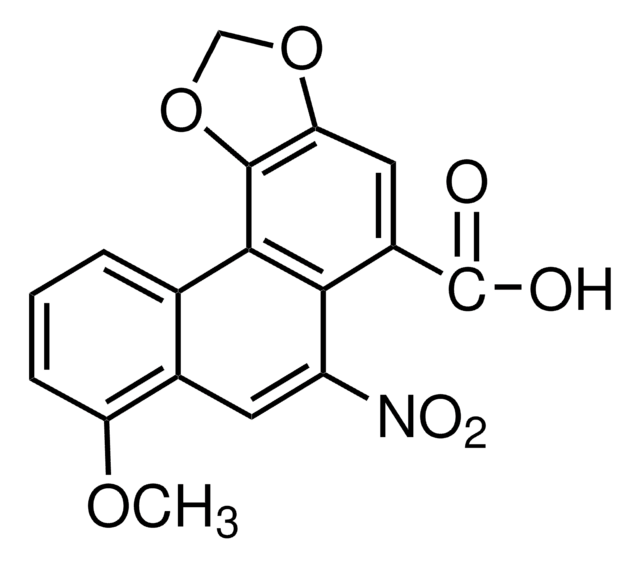52442
Monascin
≥97.0% (HPLC)
Sinónimos:
(3S,3aR,9aR)-3-Hexanoyl-9a-methyl-6-((E)-propenyl)-3a,4,8,9a-tetrahydro-3H-furo[3,2-g]isochromene-2,9-dione, (3S,3aR,9aR)-3a,4,8,9a-Tetrahydro-9a-methyl-3-(1-oxohexyl)-6-(1E)-1-propenyl-2H-furo[3,2-g][2]benzopyran-2,9(3H)-dione, Monascoflavin
About This Item
Productos recomendados
Ensayo
≥97.0% (HPLC)
Formulario
solid
aplicaciones
metabolomics
vitamins, nutraceuticals, and natural products
temp. de almacenamiento
2-8°C
cadena SMILES
CCCCCC(=O)[C@@H]1[C@H]2CC3=C(COC(\C=C\C)=C3)C(=O)[C@]2(C)OC1=O
InChI
1S/C21H26O5/c1-4-6-7-9-17(22)18-16-11-13-10-14(8-5-2)25-12-15(13)19(23)21(16,3)26-20(18)24/h5,8,10,16,18H,4,6-7,9,11-12H2,1-3H3/b8-5+/t16-,18+,21-/m1/s1
Clave InChI
XXKNHBAFFJINCK-RVEJDSBJSA-N
¿Está buscando productos similares? Visita Guía de comparación de productos
Categorías relacionadas
Descripción general
Aplicación
Acciones bioquímicas o fisiológicas
Envase
Código de clase de almacenamiento
11 - Combustible Solids
Clase de riesgo para el agua (WGK)
WGK 2
Punto de inflamabilidad (°F)
Not applicable
Punto de inflamabilidad (°C)
Not applicable
Equipo de protección personal
Eyeshields, Gloves, type N95 (US)
Elija entre una de las versiones más recientes:
¿Ya tiene este producto?
Encuentre la documentación para los productos que ha comprado recientemente en la Biblioteca de documentos.
Nuestro equipo de científicos tiene experiencia en todas las áreas de investigación: Ciencias de la vida, Ciencia de los materiales, Síntesis química, Cromatografía, Analítica y muchas otras.
Póngase en contacto con el Servicio técnico







